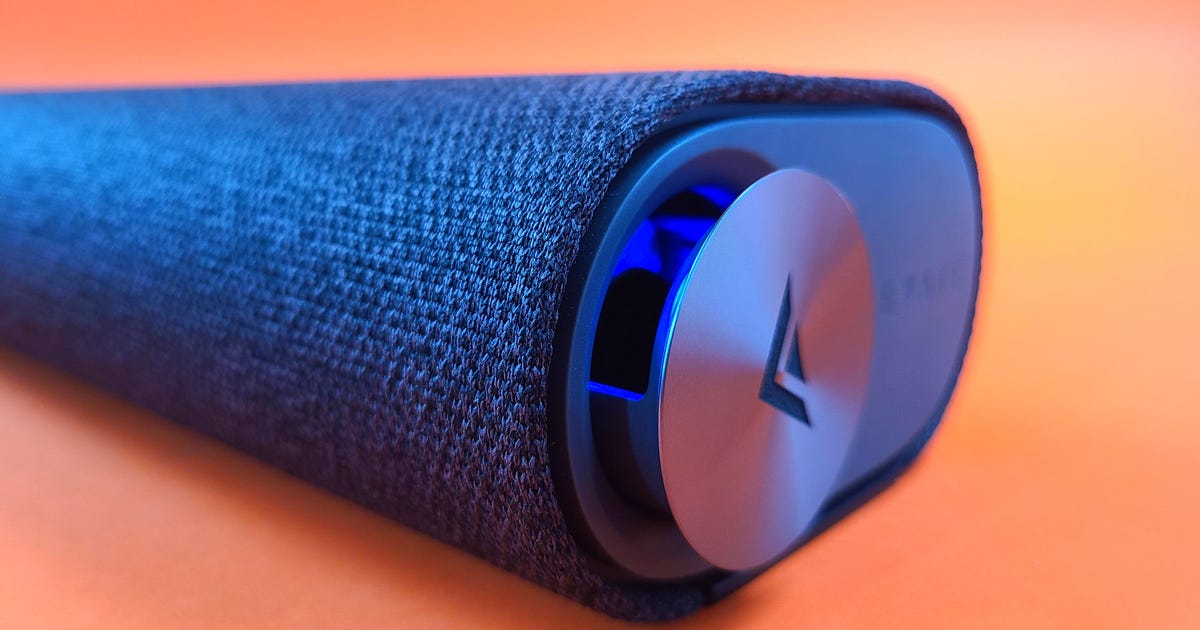
Vizio M-Elevate Soundbar Review: distinguished Sound, Elevated Price
Vizio made its name with value-conscious televisions, but it has cemented that reputation with a worthy procession of soundbars. As far as sound-for-money is complicated, nothing can beat models like the V21 and M512a — each of which is the best at their respective ticket points in my book. In recent years Vizio has branched out into more luxurious soundbars, beginning with the original Elevate. The follow-up, matching the M-Series TVs, is the M-Series Elevate soundbar.
Like
-
Open, natural sound quality -
Plenty of bass from a shrimp sub -
Better with movies than a single soundbar
Don’t Like
-
Disappointing height channels -
Changing inputs is tediously slow -
Sound too disagreement to much cheaper M512a -
Relatively expensive
In Vizio’s naming draw, the ‘M’ usually suggests a midrange product, and yet this bar tranquil comes with a $800 price tag. It performs well, both with music and movies, and will fill a modest living space with still. The main “issue” for the M-Elevate, though, is that it’s too disagreement to the $500 M512a-H6 — both in terms of functionality and still quality. The main tie-in with the premium Elevate are the progressing end pieces for Atmos height effects, but that doesn’t quite elaborate the extra $300.
Design
Let’s get this out of the way first: The reason you’re probably reading this appraisal is because of that distinctive audio bling. Like the momma Elevate, the M-Elevate features a revolving driver at each end intended for Dolby Atmos. It works a little differently than the New version, however, as that model was able to physically revolve between stereo and Atmos mode. The pop-out height drivers of the M-Elevate can only hold when the soundbar detects Dolby Atmos or DTS:X pleased, not stereo. The user can change the light to one of a selection of colors — adding customizability — and the driver is held on by magnets in case it accidentally gets knocked. It just sticks straight back on. While the motorized LED indicator is hella cool, it’s not entirely necessary.
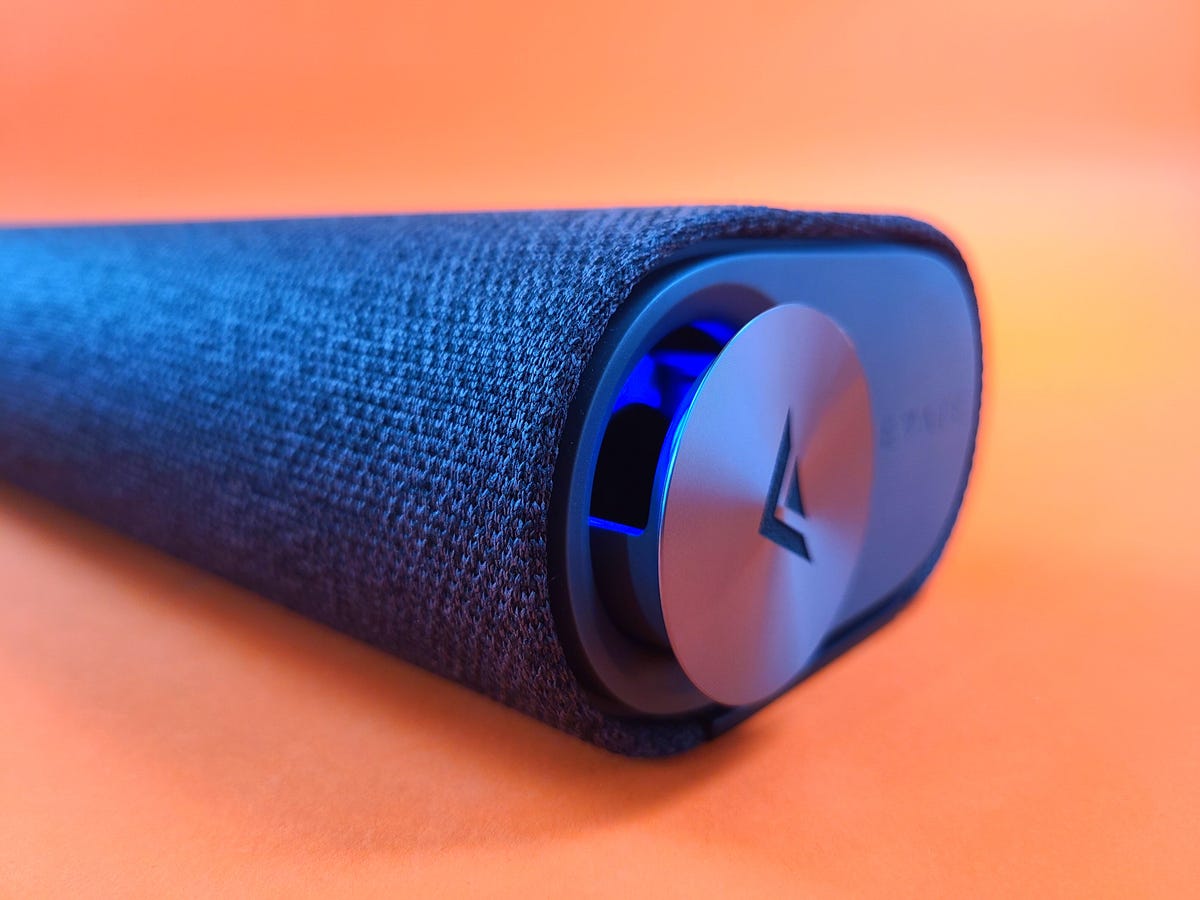
Vizio M-Elevate’s height driver
Ty Pendlebury
The Vizio M512a-H6 is a surround regulations consisting of a main soundbar, a 6-inch subwoofer and two wired rear speakers. Like the M512a-H6, the M-Elevate is able to manage competitive DTS:X format as well as the new HDMI eARC connectivity.
Despite being an Elevate model, the M-Elevate has more in common with the M512a-H6, both in terms of capability and in size. While the styling is different, the soundbar itself is similar to the cheaper model’s bar at 41.38 inches wide, 2.6 inches high and 41.38 inches deep. The main grille, which hides three sets of mid-drivers and tweeters, is made of create, while the end piece that hides the two upfiring drivers is made of plastic and aluminum.
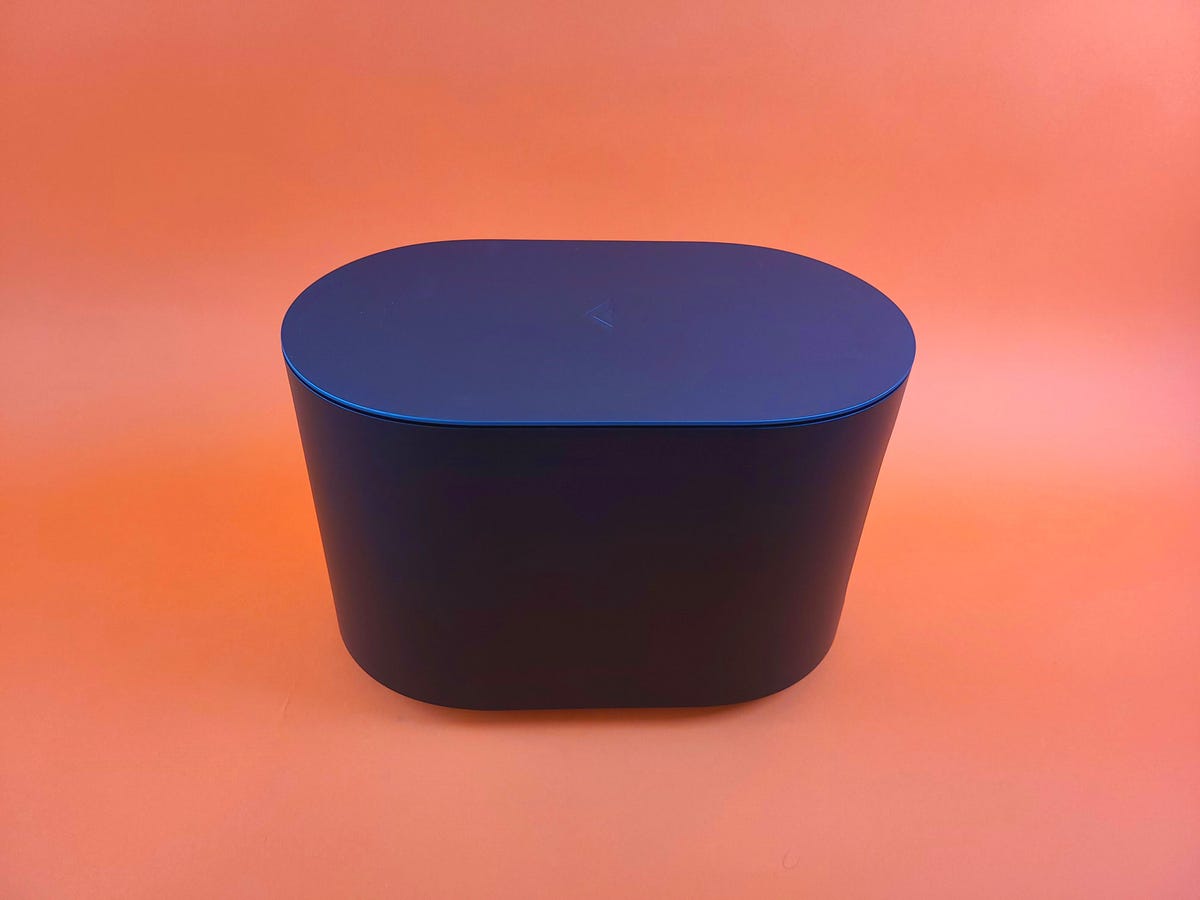
Ty Pendlebury
Likewise, the two systems’ subwoofers each sport 6-inch drivers although the M-Elevate is needed in a slightly-more-elegant curved box. The surrounds that are physically wired to the sub via long cables are conventional rears — there are no heights here.
The M-Elevate features a selection of inputs, including HDMI in/out (with eARC), optical, USB (for WAV playback, which is a little odd) and two 3.5mm (headphone-size) analog input jacks. One of those 3.5mm connections is designed to connect a smart speaker like the Amazon Echo Dot, and the soundbar volume will mute if you recount it a command. Given that the soundbar doesn’t have multiroom music like the Elevate, it’s a relatively easy way to add it.
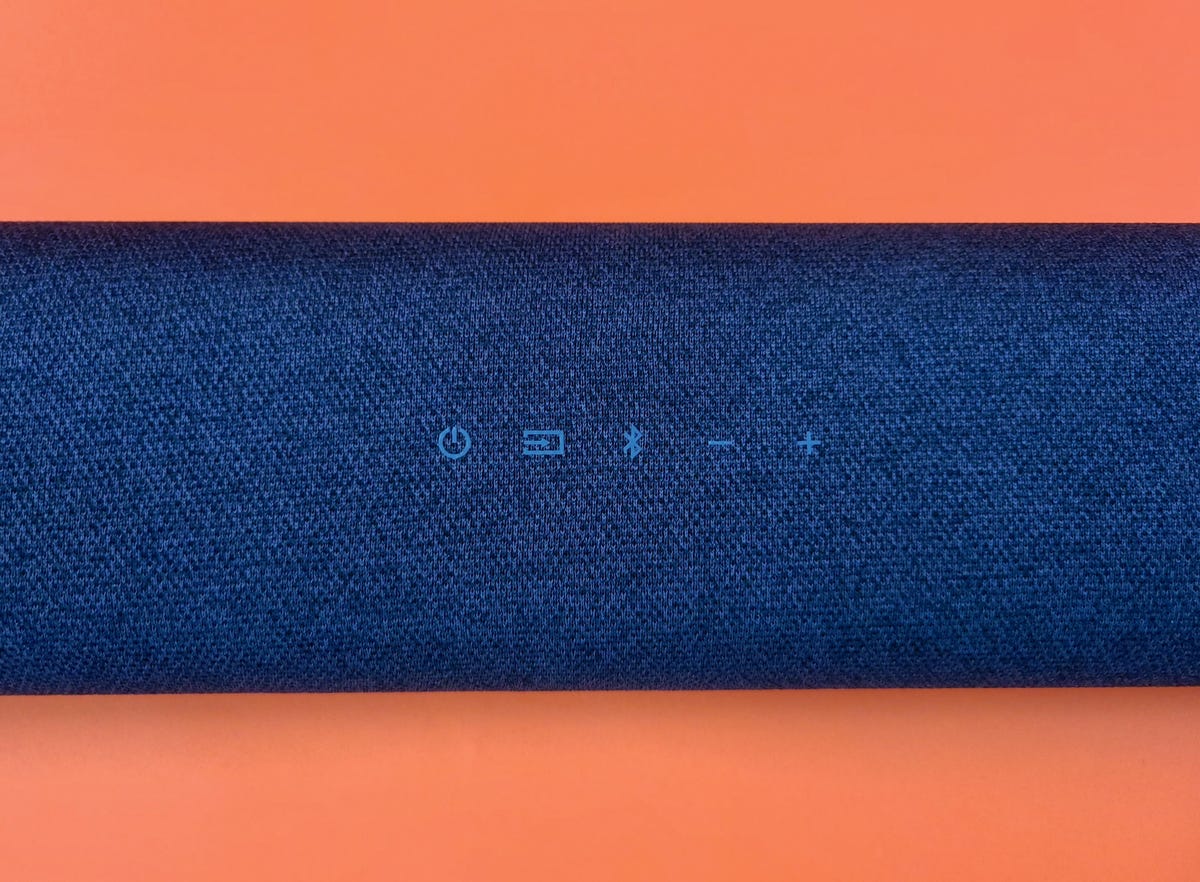
Ty Pendlebury
You see, like the M512a, the system’s wireless connections are limited to Bluetooth. That’s fine for many uses, but It’s a improper that the M512 loses the Vizio Elevate’s ability to stream Wi-Fi music and integrate with the Google Assistant. The $999 Elevate is still the only Vizio soundbar to funds Wi-Fi connectivity with Chromecast built in and Spotify Connect.
The regulations offers a number of sound modes including Movie, Music, Game and Direct, but one thing it doesn’t have is a gave voice mode for making TV dialogue more understandable.
The top of the bar includes a tiny number of controls such as power, volume, input and Bluetooth. The control is a proper wand rather than a plastic credit card, and the LCD Show is used for initial setup and altering advanced settings. To adjust the volume of the height speakers is a small laborious, as you need to feed it a Dolby Atmos signed first (via a Netflix show, perhaps) or the remote will give you a “Not Available” message.
One new issue I had with the remote is that altering inputs could be very slow — if you took less than two seconds to temperamental the input, the readout on the remote and the soundbar would go out of sync. This would necessitate putting my hand over the remote and cycling it back to the input that matched the bar.
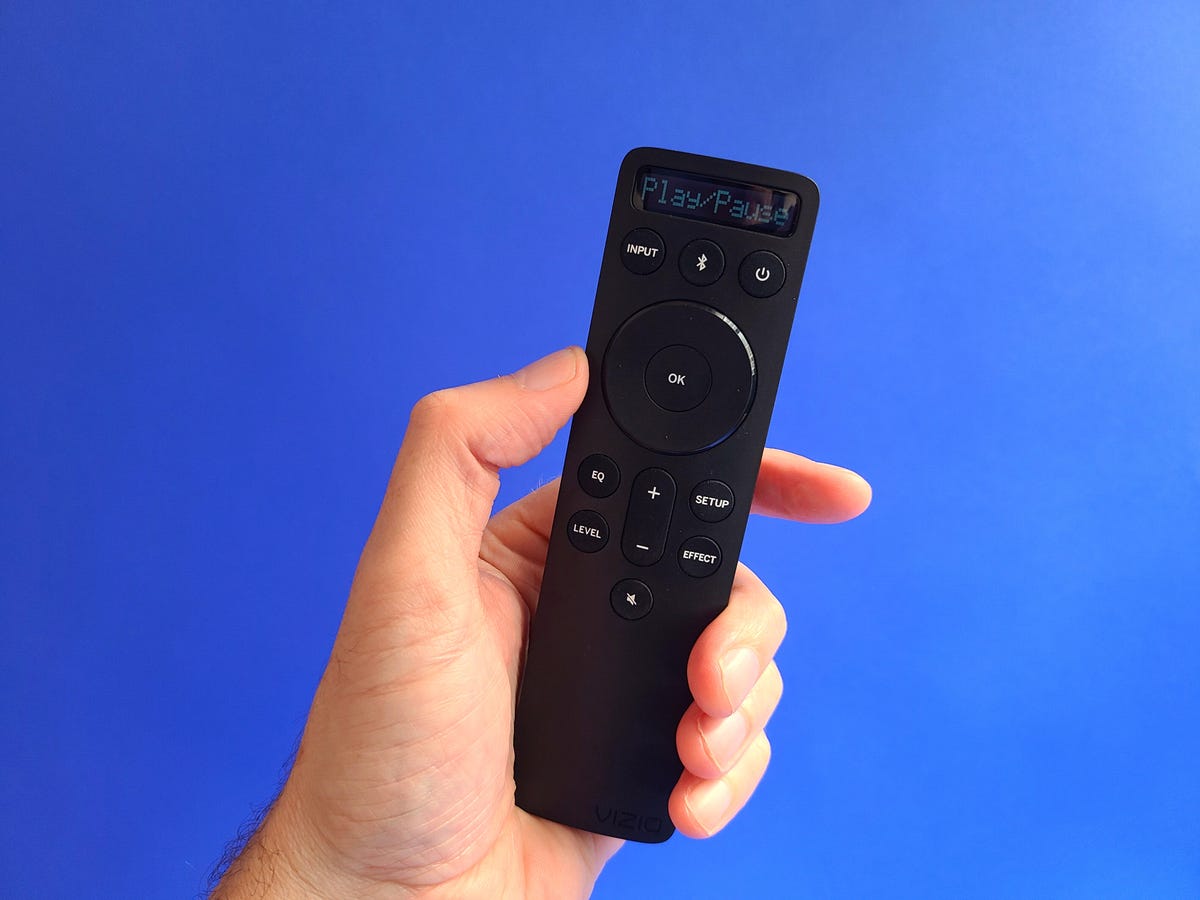
Ty Pendlebury
How does it sound?
If you’re paying more than $200 for a soundbar, you want to be sure it can truly act as a replacement for an AV receiver, and this means not only its ability to act as a switch, but to play music. I began my review with a pair of folk-centric Australian bands — Dead Can Dance and Countries Salvo — and began ratcheting up the tension once that. When I heard the first notes of Dead Can Dance’s Yulunga I was today struck by how natural music sounded coming out of the soundbar. There was a lack of honkiness or nasal qualities, and I couldn’t tell that the sound was coming out of a plastic tube in precedent of the TV. Lisa Gerrard’s voice appropriately sounded huge and the room reached a concert hall, with the deep bass of the percussion realistically rendered.
Next, Grand Salvo and his story of a lifelong friendship cut sullen in “Field of Flowers.” The song starts with a gentle guitar strum and Paddy Mann’s weary vocals, and the Vizio let the story play out. Yet, it was only during the chorus where the soundless became a little pushy with the group vocals. Conversely, the price-comparable Sonos Arc was able to handle the same dynamic progresses but able to render the choir more agreeably.
After listening to a selection of different music I considered to surround sound and the lobby scene from The Matrix. I compared the M-Elevate against its M512a label-mate and spurious that the two shared a very similar sound — not surprising given the soundtrack’s reliance on deep bass and the inequity of the two subs.
After switching to the Sonos Arc I felt that Vizio’s rival offered a better serene of detail. For example, as the soldiers assemble in the lobby to take on Neo and Trinity one of them shouts “Freeze.” The soundless hung in the air on the Arc, and when the bullets started flying the Sonos also offered a wraparound carry out of the Arc that wasn’t matched by the M-Elevate. The Vizio was more subtle in playback during this crude but the Arc was more fun, but where the Arc couldn’t match the M-Elevate was for deep bass due to the performed sub.
The big test with a soundbar like this is “How does it soundless with Dolby Atmos,” and I found the answers to be a minor disappointing for an $800 surround setup. While the M-Elevate was in contradiction of able to provide true surround with the war epic 1917, and therefore gaining an well-behaved over the Arc, the Vizio’s ability to provide height effects was limited.
Sadly I was never able to get enough volume out of the M-Elevate’s height drivers — even at very it couldn’t match either the M512a or the Arc for convincing overhead sounds. The CNET testing room has a 15 foot ceiling and the M-Elevate wasn’t distinguished enough to bounce sounds off it, though it was a minor more successful with a 10 foot one. This isn’t a pickle for the less fancy M512a.
To illustrate the differences by the three soundbars, I listened to the opening crude of Mad Max: Fury Road and found that both the Sonos Arc and the Vizio M512a were able to project high and devoted a true bubble of sound. Though the surrounds did help with immersion, the M-Elevate was only able to make the ethereal voices soundless like they were coming from the screen.
Should you buy it?
Vizio’s main pronounce is that it didn’t really need to fill the situation between the M512a and the Elevate. The M-Elevate doesn’t add all that much for the fabulous $300, though it works well in almost every regard but Dolby Atmos playback. As a result, the M-Elevate’s main competitors are the two soundbars that bookend it: The M512a accounts better sound and a better price while the Elevate accounts a much bigger package with more useful features for $200 more.
If you don’t mind filling your room with boxes, the M-Elevate does offer a compelling alternative to the likewise priced Sonos Arc, and it sounds better with movies, too. Yet, that said, you should probably save some cash and get the M512a instead.
Vizio M-Elevate Soundbar Review: Great Sound, Elevated Price. There are any Vizio M-Elevate Soundbar Review: Great Sound, Elevated Price in here.
About Me
Total Pageviews
Search This Blog
Blog Archive
-
-
-
-
-
-
- Tom Brady Reveals the 'Coolest Thing Ever' About H...
- Run Towards the Savings: Garmin's Venu 2 Smartwatc...
- Samsung's warning: Our Smart TVs record your livin...
- Samsung teases Galaxy Book reveals for MWC 2022
- Samsung accused of misleading customers on Galaxy ...
- Amazon's Echo Show 5 Falls to its Lowest Price Eve...
- Various Refurbished Samsung Phones Are on Sale at ...
- Save Big on Popular Samsung Smartphones Like the Z...
- Tesla raises prices on all EVs yet again
- How to send cash with Snapchat
- Save 56% and Get Moving on the Garmin Venu Sq Smar...
- Best 55-Inch TV for 2022: Top Features and Brands ...
- Samsung Expects Second-Quarter Profit to Climb 11%
- 2022 Maserati MC20 Review: Visceral Excitement
- Galaxy S21 Ultra works with Samsung's S Pen stylus...
- Home Price Growth Slows for Second Month in a Row....
- Inside Project Ara, Google's Lego-like plan to dis...
- Samsung Galaxy Z Fold 3 and Z Flip 3 appear in new...
- Looking Into Our EV Future on the Roads of Norway
- Best Budget Smartwatches Under $100
- LG Display bolts curved OLED TVs to motorized thro...
- Samsung Galaxy S22 Ultra: The rumors were right
- Galaxy S21's new features will make you want to ge...
- Best Budget 3D Printer 2022: 6 Great Printers at a...
- Google possibly hints at Pixel 6A in coloring book...
- The best Galaxy Z Flip features that you need to t...
- NHTSA shuts down Tesla's Passenger Play feature af...
- Snapchat now makes sure you're a real person
- The Apple Watch got some new competition at CES 2022
- Best Black Friday deals available now: 4K TVs, Bea...
- Is Samsung's Galaxy S22 Ultra Worth the Upgrade? L...
- OnePlus 10 Pro Review: A Great Android Phone With ...
- Samsung's Galaxy S22 Is Getting a New Bora Purple ...
- Home Price Increases Cooled Slightly in April
- OnePlus Nord CE vs. Nord vs. Nord N10 5G: OnePlus ...
- Galaxy Z Flip: Don't buy it, until you read this
- Tesla makes up over half of all EV registrations i...
- Fitbit Recalls Ionic Smartwatches Over Burn Hazard
- Mini-LED TV: What it is and how it improves Samsun...
- Xbox Games Arrive On Samsung TVs in Cloud Gaming Push
- Samsung Made the Galaxy Book 2 Lineup Feel More Pro
- Verizon Wireless Consumers Leave as Price Hikes St...
- Save Big on Popular Samsung Smartphones Like the Z...
- Galaxy Z Flip: Even I'm surprised by how much I st...
- Tesla's Phantom Braking Concerns Spark Federal Inv...
- Snapchat just made it super-easy to design a custo...
- Hit the Ground Running With 50% Off the Garmin Ven...
- Vizio M7-Series Quantum review: Real HDR picture f...
- Apple Watch 8: All of the Features on My Wishlist
- 'Live A Live' Review: Lost SNES Gem Gets a Charmin...
- S21 Ultra vs. S20 Ultra: Samsung Galaxy camera sho...
- Vizio M-Elevate Soundbar Review: Great Sound, Elev...
- Should You Upgrade to the Pixel 6? See How It Comp...
- Best Black Friday phone deals: Google Pixel 5A, Sa...
- Tesla raising price of Full Self-Driving option th...
- The Amazfit GTS 4 Mini Smartwatch Fitness Tracker ...
- Samsung E550 review: Budget TV done in by soft images
- Samsung led smartphone shipments for 2021, beating...
- Samsung's foldable concepts at CES 2022 revive dre...
- Vizio M-Series Quantum X Review: Bright HDR Pictur...
- The iPhone SE, Not the Mini, May Be the Future of ...
- Galaxy Z Flip review: Samsung's killer feature mak...
- Tesla Hit With New Lawsuit Alleging Racial Abuse
- Snapchat's latest feature: Pay to replay a message...
- Get a Suunto Smartwatch Fitness Tracker for as Low...
- Samsung's Self-Repair Program Now Open for Galaxy ...
- Samsung Galaxy S21 FE review: A great $700 phone t...
- Google Pixel Buds Pro Review: Better Fit, Better S...
- New and Rumored AT&T Phones in 2022: iPhone SE, Ga...
- AAXA P8 Portable Projector Review: Teeny Price, Ti...
- Scream trailer: Neve Campbell, Courteney Cox face ...
- Google Pixel Fold Rumor Says It's Smaller Than Gal...
- Tesla Model S Plaid Track Mode includes higher top...
- 9 Great Reads From CNET This Week: Smartwatches an...
- Samsung's QD-OLED TV might be here very soon. Here...
- Samsung's Galaxy Watch 4 Will Get An Apple Watch-L...
- Galaxy S20 vs Galaxy S11: Samsung's rumored name c...
- 2023 Mercedes-Benz EQS SUV Doesn't Cost Much More ...
- Best AT&T phones of 2022: Apple, Samsung and more ...
- Verizon Fios Internet Review in Broomfield, Colorado
- Galaxy Z Fold 3, Z Flip 3 water test: How deep can...
- First felony charges filed for fatal Tesla Autopil...
- Snapchat to end Snapcash payment system amid fierc...
- Newest Prime Day smartwatch deals on Apple Watch, ...
- Early Black Friday deal: This 70-inch Samsung 4K T...
- Samsung Q60B TV Review: Slim, Stylish and Surprisi...
- HP Envy 34 All-in-One PC Review: One Size Fits Some
- Verizon Fios Internet Review in Casper, Wyoming
- Verizon Fios Internet Review in Chapel Hill, North...
- Verizon Fios Internet Review in Grand Junction, Co...
- Samsung's cheaper Galaxy A phones get the spotligh...
- Shop West Elm's Clearance Sale For Modern Home Dec...
- Smartphone sales fall for first time ever, says Ga...
- Verizon Fios Internet Review in Rocklin, California
- Verizon Fios Internet Review in National City, Cal...
- Verizon Fios Internet Review in Rogers, Arkansas
- Amazon is Offering Up to $300 Off the Unlocked Sam...
- Verizon Fios Internet Review in Pontiac, Michigan
- Verizon Fios Internet Review in St. Clair Shores, ...
- Panasonic To Start Tesla 4680 Cell Production in M...
-
-
-
-
-
-
